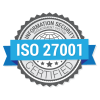Cost Savings in IT
Introduction
Did you know that 3% of invoiced charges are likely to be billing errors? Are you looking for ways to identify these errors and claim refunds from your vendor?
Trying to work out how to systemize the process?
In this article, we’ll explore the different types of billing errors and the steps you can take to find all of them. By the time you’re done reading this article, you’ll not only have a clear understanding of exactly what a billing error is, you’ll be well on the way to improving your cost optimization strategy in your organization. Let’s get started!
First of all, why it matters to look for billing errors
In the last decade, large IT vendors have increasingly recognized how important the customer experience is and have invested heavily into digitization and improving internal processes. A big part of this is ensuring that the invoice they issue you is actually correct.
Despite this investment, “billing errors” is still the top concern for large vendors servicing enterprise customers. If their internal processes could look like anything, it’d be a block of Swiss cheese: holes everywhere. Let’s be fair, enterprises also need a dizzying range of products and services that aren’t just hard to manage, they also come with very complicated pricing terms and conditions. Some vendors are bad with their contracts, just as some enterprises are difficult to work with – it goes both ways.
This landscape helps explain why 3% of invoiced charges are likely to be billing errors. It happens even despite the best efforts from both sides.
In any case, right now you just need to find the billing errors and get the money refunded.
Types of billing errors
Firstly, here are simple kinds of billing errors that are the low-hanging fruit for vendors & enterprises alike to identify. In 2023, if these errors are found on your invoice, you should be taking a hard look at changing vendors.
- Duplicate Charges: the same product or service is charged twice or multiple times on your invoice.
- Rate Calculations: the normal price for your product or service is charged incorrectly over a period of time, e.g. you pay $100 a month for a product, which charged $103.2 because the vendor mistakenly added an extra day. This especially happens with administration changes, like changing the account number on your invoice.
- Incorrect Tax: you are charged for the wrong amount of tax.
These errors can be found by just looking at your invoice alone and are common across just about every customer the vendor looks after. As such, vendors normally have decent systems in place for spotting these – but they occasionally still slip through when your invoice contains thousands of line items.
Some billing errors are tougher to spot because they require knowledge of your contract. Here are some of the most common examples:
- Charges for Incomplete Service Given: you are charged for services that was meant to remain discounted. A clear example of this is a mobile phone that includes 100GB of data, but you start getting charged after 80GB of data.
- Unauthorized Products: you are charged for products or services that you never requested. Enterprises often have agreements in place that restrict any kind of product or service being added they didn’t explicitly agree to.
- Contract Pricing Starts Late: the pricing you agreed to starts later than the contractually agreed date. You end up being charged more at the old prices than you should have been.
- Incorrect Contract Pricing: the prices and discounts you should be receiving aren’t given across all the products and services on your invoice.
- Unauthorized Price Changes: mysterious price changes triggered on your invoice that were not signed off on a contract or service order.
- Orders Submitted But Never Invoiced: you submit an order to disconnect a network location. The services are disconnected but you continue to be charged for them.
Preparing to find billing errors
Because it’s close to impossible to find all kinds of billing errors without technology, it’d be easy for us to get bogged down in recommending different tools.
We’ll focus instead on the inputs you’ll need in order to be successful in actually finding anything.
First, you need to know where to get the right data. You will need:
- Every invoice (over the last 7 years) in an itemized format
- Every contract that explains the pricing terms
- Every order submitted to your vendor
These can be tricky to find! As we’ve discussed in our previous article (Cost Savings in IT: methods for optimizing costs), your invoicing or contract management system never has the sufficient detailed documents or records needed to find billing errors because they weren’t designed to help you with that.
It is still best practice to extract as many contracts and orders as you can internally while requesting your vendors to provide their own records to you. That’s because your vendor often doesn’t have perfect records either and you’ll need to compare your records against theirs.
Next step is to build a profile of what is special about your contract.
- What special requirements have been agreed with your vendor?
- What did your organization expected to get from the vendor?
This is high-level information that provides useful context for the detailed data extraction and analysis that happens on your documents.
How to find billing errors
This is where the steps get technical and very difficult to do using manual tools like Excel.
To accurately identify all billing errors AND get them refunded by your vendor, there’s four components you should focus on:
- Document Extraction: extracting detailed data from contracts, invoices, and orders.
- Data Linking: linking the data from those documents into meaningful facts and relationships.
- Data Analysis: analytics that are purpose-built for cost optimization.
- Data Presentation: insights & opportunities that make sense to everyone and are actionable. This is critical for effective partnering in your business.
Document Extraction & Linking
Standard OCR tools or the cutting-edge Intelligent Document Processing platforms out there are not really fit for finding billing errors because the level of detail you need to get from your documents is much more than these platforms were built for – and once you’ve found the data you still need to figure out how to meaningfully link the data between your contracts, invoices, and orders.
Data Analysis
To obtain the right level of analytics, you’ll need to be able to:
- Re-calculate the appropriate invoice charges from the agreed services and pricing structures on your contract.
- Re-calculate pricing between dates, e.g., how much should $100 per month cost between 1st January and 13th February?
- Perform multi-level matching to reconcile the correct order against the correct line item on your invoice.
- Translate your vendor’s technical jargon to provide a common basis of analysis.
Data Presentation
While your analysis may be the best thing ever done anywhere, it won’t mean anything unless your stakeholders can understand it.
Vendors will push back on your findings and say anything they can to cause you to lose confidence and drop the issue.
The errors themselves can get lost in translation very quickly and need to be presented in a way that no-one can argue against.
Think of this like an auditor examining financial reports. They need to present their findings in a way that clearly shows methodology and findings.
The right technology
AI has been making significant progress recently, but it is important to make sure you can rely on the results it produces. When trying to optimize costs in IT, it is critical to ensure the tools you are using are accurate and complete. This can be challenging, as IT cost optimization often requires analysing data from various sources that may not be supported by traditional software.
To ensure completeness and accuracy, you’ll need a solution specifically designed to reconcile data between documents. We call this solution category Optimization Software. If you are interested in learning more about optimization software, please feel free to reach out here for more information.


